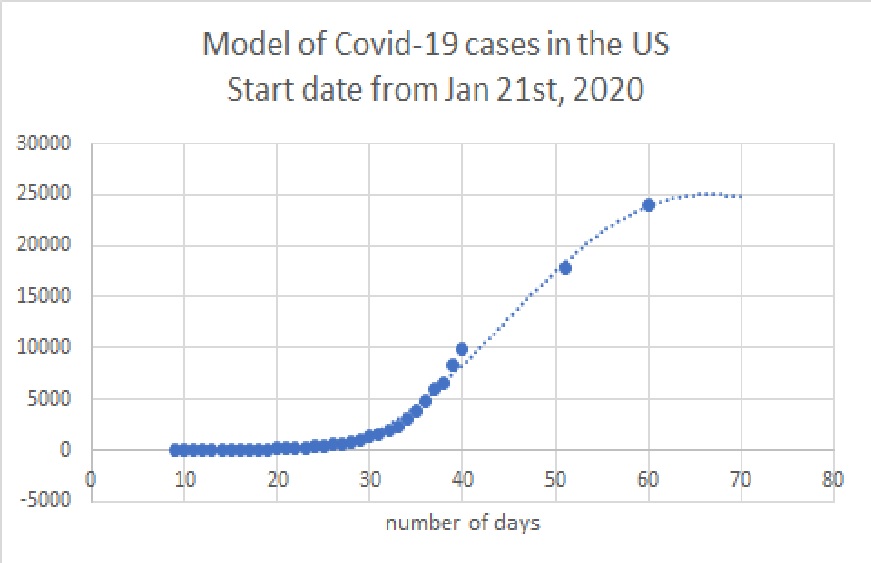Capitalism definition and its success
Capitalism has won. It’s been almost 250 years since Adam Smith1 published “The Wealth of Nations”. Smith is credited for offering the first theory of capitalism which he described as a system of natural liberty, in which individuals can be trusted with a market based system, without state intervention, which would lead to a highly productive and growing economy.
Smith’s work is the most compelling guide to prosperity because of its moral force as he says free markets are led by an invisible hand benefiting everyone, not just the individuals and companies motivated by their own profit.
The data justifying the sucees of capitalism is equally compelling. The world has seen a dramatic rise in GBP and living standards in the past 200 years. Researches point to several metrics including reduction in global poverty, increase in life expectancy, increase in household income that are attributable to to capitalist economies2,3 . This engine of growth has been even more pronounced in the last several generations as countries like China and India have adopted free market reforms and seen explosive economic growth.
Lawson4 states that “The scientific evidence is simply overwhelming that countries that pursue more economic freedom enjoy better socio-economic outcomes in almost every dimension”.
Defining features of capitalism
A key feature of a capitalist economy is that it is organized around private ownership of the means of production, in which “private” stands for individuals and firms, not state. The owners predominantly gain income from their share of ownership and its growth, while labor mainly earn income from wages. Some of other the key features of a capitalist economy include:
Free market : property can be sold, bought and exchanged by citizens at a price agreed upon by free market forces of supply and demond and not dictated by the government.
Factors of Production: In capitalism, private enterprise controls the factors of production, which include land, labor, and capital.
Accumulation of Capital: The centerpiece of a capitalist system is the accumulation of capital as the driving force behind economic activity is to make a profit.
Markets & Competition: Competition is the other vital attribute as businesses compete to provide consumers with goods and services that are better, faster and cheaper. Competition forces businesses to maximize efficiency and offer their products at the lowest prices the market will bear as well as it helps to spur innovation
In support of capitalism
Some of the strongest arguments supporting and justifying capitalism is that is the moral ideal that supports freedom and liberty and thus it’s association with liberalism. In The Road to Serfdom, Hayek5 argues that the abandonment of individualism and classical liberalism inevitably leads to a loss of freedom, the creation of an oppressive society, the tyranny of a dictator, and the serfdom of the individual.
Similarly Ayn Rand6 maintained that capitalism is the only morally socio-political system because it frees people to act in their rational self-interest, and asserted that no politico-economic system in history has ever proved its value so eloquently or has benefited mankind so greatly.
There are many additional arguments in support of capitalism
- Economic freedom helps political freedom. If governments own the means of production it invariably leads to a powerful state creating a large bureaucracy
- Efficiency. Firms in a capitalist based society are incentivized to be efficient and produce goods which are in demand.
- Innovation. Capitalism rewards innovation and sets a dynamic where entrepreneurs and firms are seeking to invest in, create and develop new products and services to avoid stagnation.
- Human condition: being built on the notion of incentives, everyone has an incentive to build, create, and serve others, which is in line with basic human conditions.
- Belief in People: The capitalist believes that people can make their own best decisions. This is the basis of the free market with millions of people making individual choices.
While some of these arguments downplay the negative effects of capitialism and some seem to claim eminent domain to the advantage, it is hard to deny that capitalism offers a lot. I personally strongly value the individual freedom to create and innovate as an agent of growth as well as self emancipation, in particular in today’s fast moving technology society.
In a speech in 1963, John F. Kennedy said “A rising tide lifts all boats”. While he was not referring to capitalism specifically, since then this has often become the mantra of supporters of capitalism. Has capitalism lived up to this and if so, should we just hand it the mantle and close the debate? I don’t think we can reach that conclusion just yet. For a moment lets seque and look at what stands in contrast to capitalism.
Socialism
Socialism stands in contrast to capitalism in which the means of production are popularly controlled. The focus is not on individualism but collectivism of the community at large. Socialism manifested itself in the form of communist and Marxist systems of government in which there was a command economy with central planning. These found great popularity in the early 20th century, offering a vision of an equality based ideal in contrast to the ills of capitalism as described by Marx. Dozens of countries around the world adopted Marxism, yet a majority failed and today there are only remants of communism in a handful of countries. To understand their demise, it is interesting to look at the Soviet Union as it was the largest and most enduring.
The Soviet system was a huge success post second world war. It was seen as a model economy with high growth, good wage growth and satisfaction of the worker. The state five year plans were successfully implemented for several decades. However over time the progressive system of socialism completed eroded. The ruling elite oriented the economy to military expansion7 with the arms race and space war with the U.S. The common people, the workers, were treated like serfs and slaves: they were given the necessities of food, shelter, clothing, transportation and medical care but little else. This ended up being a replication of feudalism in that there was an absence of personal freedom of the common people. It was exactly what Hayek predicted would happen in his 1944 book “The Road to Serfdom”. But it wasn’t the failure of the ideals of socialism as Marx envisioned, it was purely a failure of those in command of the economy that was meant to benefit the people. The politburo forgot about the socialist manifesto and were consumed by greed, hunger for power and ego. It is estimated that over 70% of the economic output was used for military of space related pursuits as opposed to using it for the benefit of the people.
Socialist ideas to correct capitalism
Across the world, capitalism is actually implemented in a variety of hybrid foirms using various concepts of socialism to temper or correct some of the isues as mentioned above. Scandinavian countries have adopted a greater socialist leaning style while China started with a communist regime and slowly openened up to free markets and capitalism. For this paper, I will focus on the US style of capitalism which is welfare state capitalism. The state plays the role of creating welfare mechanisms that are funded by way of taxation. The welfare programs are aimed and trying to assist the least advantaged in society by providing services and support, which is the US style of redistribution.
The ugly side of U.S. capitalism
We’ve sung the praises of capitalism, so now it is time to look at the other side.
Piketty8 shows us how the rate of growth of capital has outpaced the rate of growth of the economy over time in capitalism. This has resulted in the owners of capital and the means of production to grow far wealthier than those that just work for it. The ideals of liberalism and capitalism asked us to believe in the individual and the supporters of capitalism such as Brennan14 presuppose that people are altruistic. The reality is that people are inherently greedy and selfish as pointed out by Cohen15 and humans are still in their predatory phase of development.
Saez and Zucman9 provide concrete data on the real state of the US capitalism today, stating that the bottom 50% have an average pre-tax income that has stagnated at $18,500 per adult, out of this rising share goes to taxes & health thus impeding wealth accumulation. At the top is the opposite process, booming income and falling taxes has snowballing wealth accumulation effect.
According the Federal Reserve data10, the wealthiest 1% possess 40% of the nations wealth and the bottom 80% own only 7%. This trend has been continuing for decades since Reagan’s libertarian policies, with the wealth of the 400 richest Americans growing over 21 times since 1982.
Saez and Zucmanalso show how the tax policy in the US heavily favors the wealthy, as billionaires pay lower tax rates than the working-class; capital income is not or little taxed (with corporate retained earnings and reduced rates on dividends and capital gains); collapse of corporate taxation and 60% of the profits of US multinationals booked in tax havens.
The combination of capitalism with a taxation system that favors capital has resulted in massive wealth inequality. Over the last 30 years the top 5% of the country have seen a significant rise in income and wealth while the bottom 20% has seen stagnation in their wages, thus in real terms, they are getting poorer. US capitalism has been a huge of engine of economic growth but significant portion of the population is losing wealth.
Inequality has significant impact in society. It increasingly operates through education which is closely correlated with parental socio-economic status. With lower economic and educational expansion possibilities, income inequality increases and upward mobility decreases. Mahbubhani11 says these inequalities will enable those better situated to exercise a larger influence over the development of legislation. In due time they are likely to acquire a preponderant weight in settling social questions, at least in regard to those matters upon which they normally agree, which is to say in regard to those things that support their favored circumstances. There has been a transfer of wealth and political power from the vast majority of America’s population to a privileged super minority. Thus America is turning into a Plutocracy moving away from its democrtatic roots.
There is serious worry about the instability that arises out of massive inequality. Piketty says “Every human society must justify its inequalities: unless reasons for them are found, the whole political and social edifice stands in danger of collapse.”
Even billionaires such as Ray Dalio are increasingly concerned about the increasing wealth gap, booming debt and tax inequality are pushing America to a tipping point as he writes in a recent article12. In a CBS interview in July 2019, he said “Capitalism needs to be reformed in order to work better” explaining that “the U.S. economy is not redistributing opportunity”. According to Dslio, The current situation is not sustainable, and he says “We’re at a juncture. We can do it together, or we will do it in conflict, that there will be a conflict between the rich and the poor”
The tide continues to rise, but we only see the luxury yachts and cruise ships – while there are lots and lots little row boats not to be seen that are drowning, run aground or broken. It’s a pretty picture but an ugly situation.
Redefining American capitalism
It is evident that market forces alone cannot create a level playing field for all Americans. The welfare capitalism practiced in America expects the government must step in to redress major social and economic inequalities, however it has clearly failed to address the inequality. This is largely due to the tax policies since Reagonomics being highly influenced by libertarian thought and by the wealthy, thus the welfare system that depends on tax revenues has been collecting less and less revenue from the wealthy and the highly profitable corporations.
How do we begin to redefine and redesign American capitalism? To present my views, I would like to draw from from concepts from Physics.
Any complex system has multiple forces acting on it. If the forces are acting in different direction and are unequal or changing often, over time, the system will destabilize and will be broken apart. For a stable system in the long run, the various forces needs to reach a state of equilibrium, mostly working in the same unified direction to create progression. Societies are complex systems and for an enduring system, forces of stability and equilibrium need to be established. Such a system would also meet the difference principle in Rawl’s principles of justice13, causing a improvement in the weakest forces by a shift in the system to maintain equilibrium.
Unfortunately American capitalism is proving to be an unstable system. Like Soviet communism in which the forces of the politburo were in contention with the forces of the needs of the people and the system collapsed. Is it now America’s turn to collapse as Dalio predicts due to the predatory nature of the elite working in contention with the needs of the population at large?
To design a stable system, we need to understand the factors that create contention. Any system that contains points of contention and too many compromises, will always be just 1 or 2 election cycles away from demise.
American history is that of liberalism. First and foremost, any system must recognize that liberty and individual rights cannot be violated.
Taxation is the next real sticky point – the word “tax” is always taken perjoratively. It is a fine, a burden, akin to punitive and so on. A stable system will need to find an alternative way to make capital flow to where it is needed.
Interests and efforts need to be aligned. Today the capitalists believe it is their job to just create wealth at any expense and protect it from the state; the state is always looking for ways to get revenue to meet is social obligations and over half the population are just trying to find a way to make ends meet.
The government alone cannot be responsible to take care of the issues of inequality and the needs of the disadvantaged. As Amartya Sensaid, for societies to progress they need the “invisible hand” of the free market and the “visible hand” of good governance.
What about philanthropy
The capitalists, wealthy elite and corporations usually shout foul, saying they pay their fair share of taxes as well as point to how much they give away through philanthropy. The first part of this argument has already been debunked with numbers such a provided by Saez / Zucman.
As for philanthropy, while there are many well meanging and impactful philanthropists in
America, the system overall is broken. When the CEO’s of charities get multi million dollar salaries, they are nothing but quasi capitalist organizations. It is estimated that on the average less than 15% of all charitible donations actually go the the causes they seek to benefit. It is also worthwhile to note that most corporate giving is self serving – marketing value, support the issue of the day and absolution of guilt – as opposed to being done with a true sense of purpose and desire for impact.
Welfare and charity also do not have the value of wealth creation. They also have a negative impact on human dignity with people only able to subsuist with the “begging bowl” out. This is yet another destabilizing force. While there is a place for some welfare and meaningful philanthropy, they cannot be the cornerstone of a stable, just system of equality.
The new design
My new design of American capitalism (or what I would like to see change over the next decade or so), is a follows:
The critical requirement and feature is the alignment of all, through a “buy-in” from capitalists. They should be convinced that the elevation of all and the decreasing of inequality is as much their business as any one elses, with a shift in the mindset that government taxes cannot be solely responsible for welfare. Instead of a flow of money into government and out to government programs, there should be direct involvement of corporations in social equity programs. Economic justice becomes part of the mission of capitalists and they are directly engaged in such activity. This can can be done via strong public/private partnerships that utilize both the breadth, the reach and the regulatory power of the state aliong with the innovation, efficiency and growth focus of the capitalist. It is a way to redirect a part of the engine driven by greed and selfishness into focusing on social impact and community involvement. Harnessing the human conditions that drive capitailism, as Cohensays, into social benefit.
An example of such public/private parterships could be an organization responsible for ensuring all schools in the state have the same level of resources and facilities. This is funded as well as assisted directly by corporations in the state, by way of money or by actual participation in the fixing of the schools.
Another facet I would propose is the greaster ownership of the means of production by the workers. While Anderson16 believes a “voice at the table” is required, I would go further to say that some level of ownership is required to remove alienation.. Companies like Publix supermarket are about 25% employee owned through a stock grant program for all employees which aligns workers completely with the company growth. Silicon Valley strongly believe in this and so should corporate America as a whole.
As for taxation, the obvious changes should be closing of the corporate tax haven loophole, treating income and capital gains equally and a more progressive tax system. However since the welfare of the community will be directly influenced by capitalist, this de facto will be a progressive tax without the negative connotation of the word “tax”. Finally, there maybe need for some multi-year period of wealth tax after which only the increase in wealth would be taxed.
Challenges and rebuttal
The obvious challenge is that of the difficulty of achieving this and the difficulty in changing the mindset and consciousness of capitalists. I see it differently as it is a matter of messaging. Corporations that directly benefit society get the benefit of goodwill from society, which help business in the long run. They get the benefit of less alienated and more engaged wiorkers. But more importantly they feel they have a say and some level of control and participation in social welfare programs as opposed to just being taxed and the government wasting it through inefficiency and beaurocracy. This entire message will ring strong with them.
There are many examples already – Chobani Yogurt actively particaptes in social community building activity and redistribution of profits with it employees and the community at large and has become one of the most successful and respected wellness food companies in the process.
Conclusion
I have proposed a different type of capitalism which meets the needs of libertarian and modern American liberals alike, it defocuses taxation and a large welfare state, it aligns the power of capitalism to social good and to assist in the problem of inequality. It is a stable system with the forces aligned. I don’t know what to call it, and although we don’t need another “ism” I will call it “social purpose capitalism”.
All the boats are now tethered together and they truly can all rise with a rising tide. The ideal of capitalism can be realized.
References
1 Smith, Adam “The Wealth of Nations”
2 Wilson, Sy “Capitalism and Economic Growth Across the World”. Jan 2016, SSRN Electronic Journal
3 Skarbek, Emily “Capitalism and Economic Growth”, Independent Institute, April 2010
4 Lawson, Robert “Capitalism is slowly winning around the world” SMU Cox School of Business
5 Hayek, Fredrich “The Road to Serfdom” , 1944 University of Chicago Press
6 Rand, Ayn “Capitalism: the unknown ideal” , 1966 New American Library
7 Watkins, Thaker “The Economic Collapse of the Soviet Union”, San José State University
Department of Economics
8 Piketty, Thomas “Capital in the Twenty-First Century” , 2017 Harvard University Press
9 Saez, E. and Zucman, G. “The Triumph of Injustice” W.W. Norton, 2019
10 “New Federal Reserve data shows how the rich have gotten richer”. vox.com. June 13, 2019.
11 Mahbubhani, Kishore “Democracy or Plutocracy?” Horizons, Autumn 2020, No. 17
12 Dalio, Ray “The Archetypical Cycle of Internal Order and Disorder” LinkedIn, Dec1, 2020
13 Rawls, John “A Theory of Justice” Harvard University Press 1971
14 Brennan, Jason “Why Not Capitalism?” Routledge, 2014
15 Cohen, G.A. “Why Not Socialism?” Princeton University Press, 2009
16 Anderson, Elizabeth. “Private Government: How Employers Rule Our Lives” Princeton University Press, 2017








